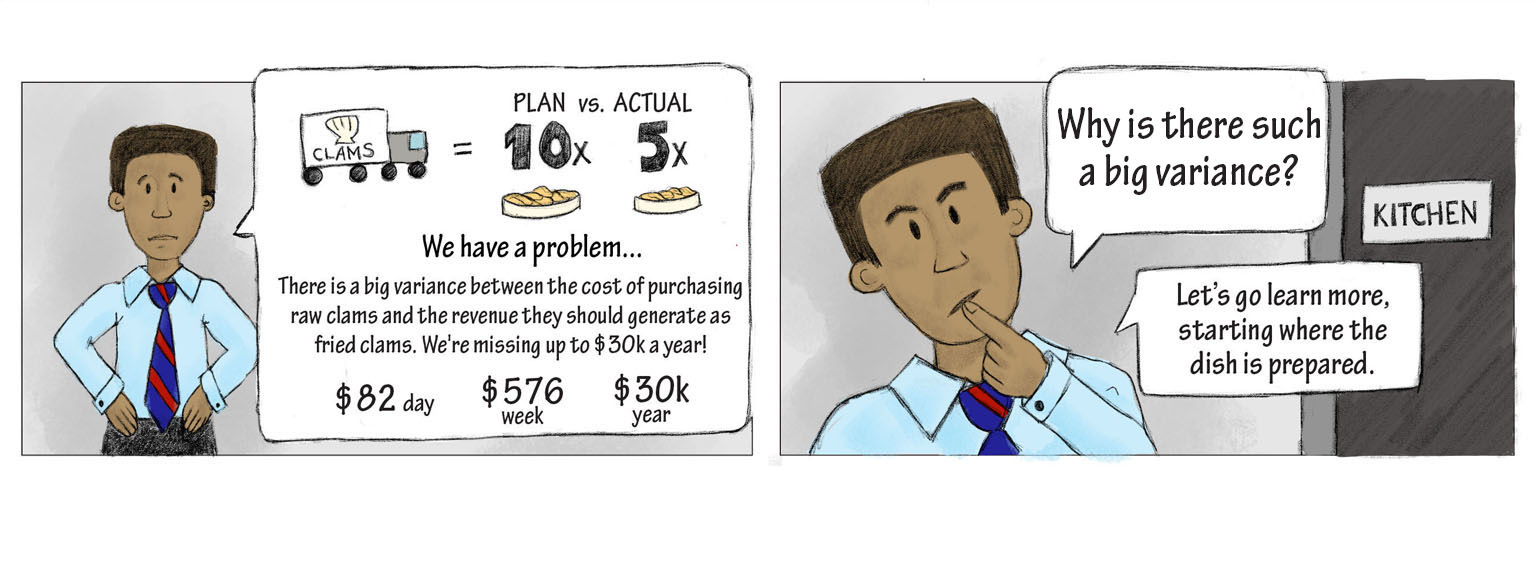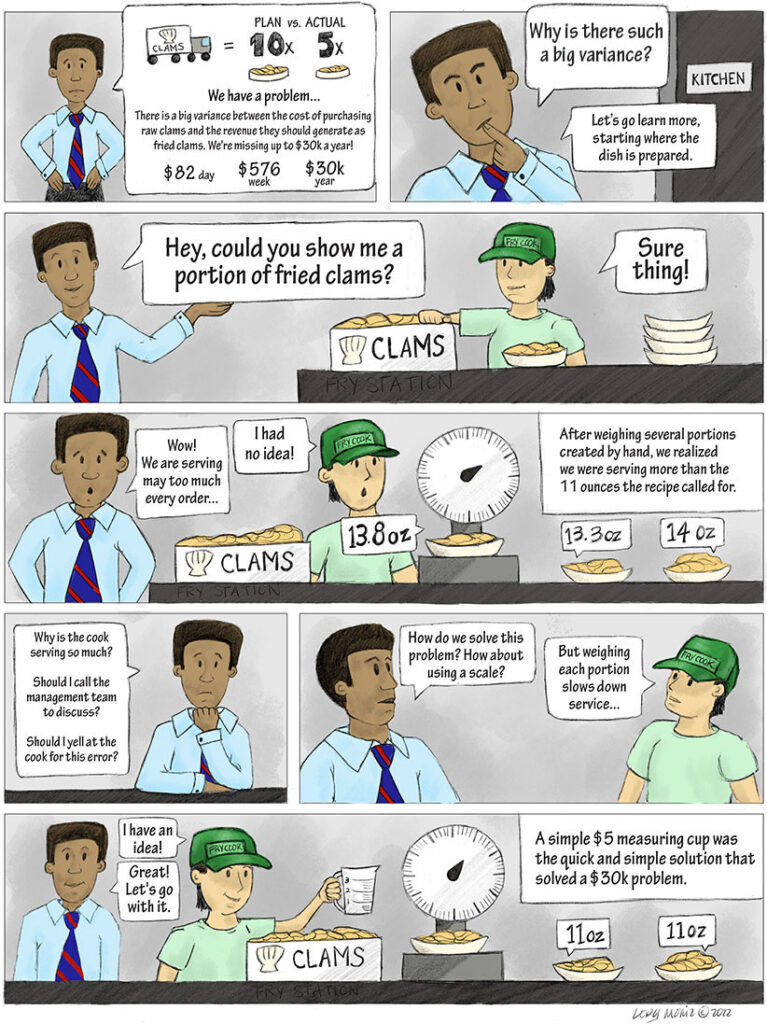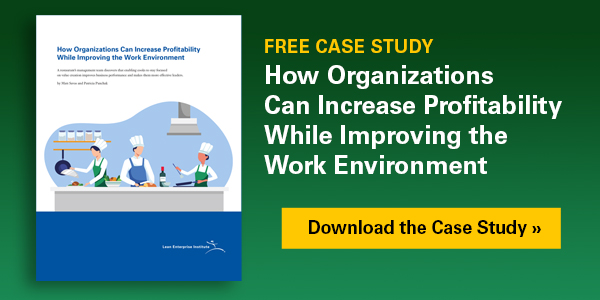Connecting frontline problem-solving to high-level business objectives is no easy task. But to move the needle on revenue, cost, quality, or any target, leaders must eventually move away from discussion in a conference room around Excel spreadsheets to problem-solving at the gemba.
A director of back-of-house operations at a hospitality group’s largest restaurant faced a daunting target from executive leadership to double the operating margin. The director identified food waste reduction as one focus area to achieve the target.
The most glaring type of food waste in the restaurant industry is throwing out food that the kitchen never managed to serve. A less familiar type is serving food that the kitchen never meant to. This story is about the latter.
Building a Lean Operating and Management System
Gain the in-depth understanding of lean principles, thinking, and practices.





The only drawback I could see to this is that customers that regularly order the clams will start to think “Wow, why is this place so stingy with the portions now?”. A better business decision might have been to make the 14oz the standard size and adjust the menu price accordingly.
Hi Justin — that’s a good point. This particular restaurant group was vigilant about tracking customer satisfaction. This did this through a variety of methods. They did monitor the point you made. The data collected indicated customers did not notice the reduction in portion size. Also, not all customers would have received a large portion. The portions were irregular because the fry cook hurriedly grabbed a fistful of clams — some large and others on target.